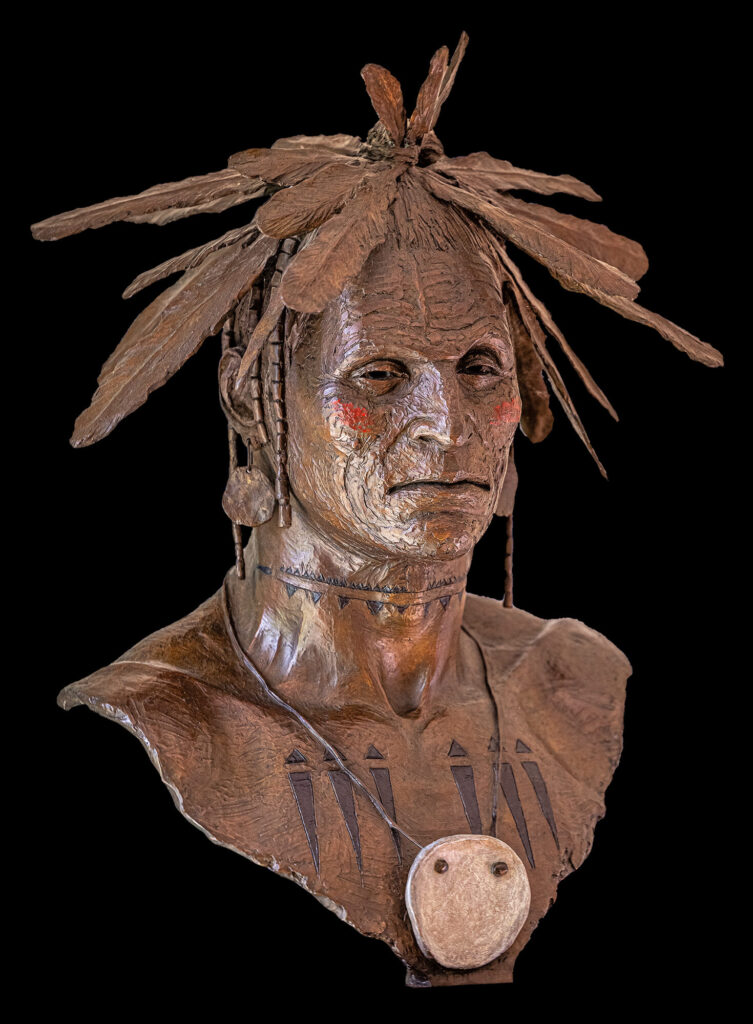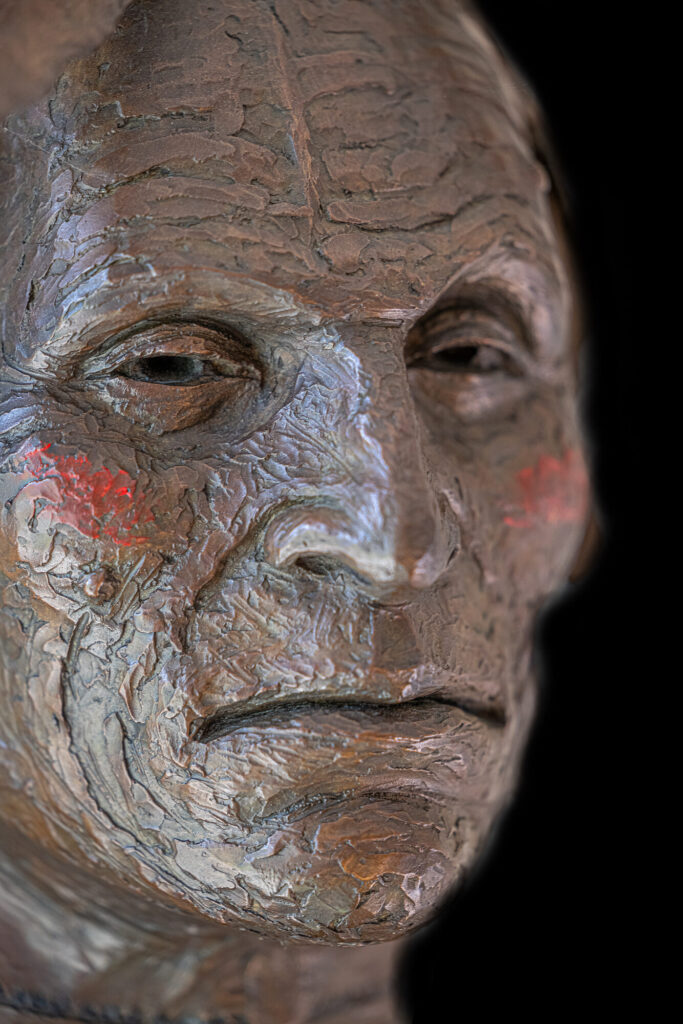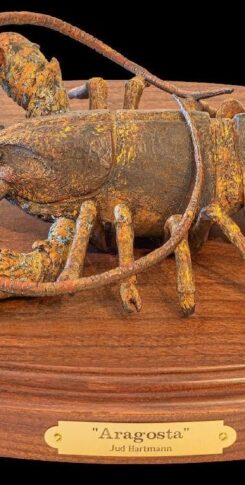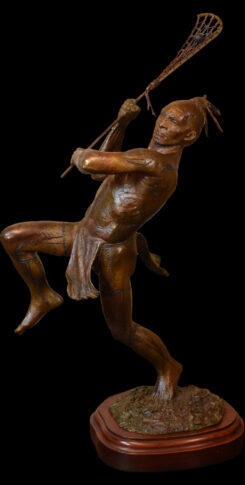“Le Grand Sauteur”

Bronze edition: 20 | Height: 28″ (with base)
“Englishman, although you have conquered the French, you have not conquered us!”
“Minavivana appeared to be about 50 years of age, he was well over 6′ in height and had in his countenance an indescribable mixture of good and evil. Looking steadfastly at me [he began his speech]: ‘Englishman, although you have conquered the French, you have not conquered us! We are not your slaves. These lakes, these woods, these mountains, were left to us by our ancestors. They are our inheritance; and we will part with them to none.'”
Alexander Henry,
“Travels and Adventures in Canada
and the Indian Territories” (1760 – 1776)
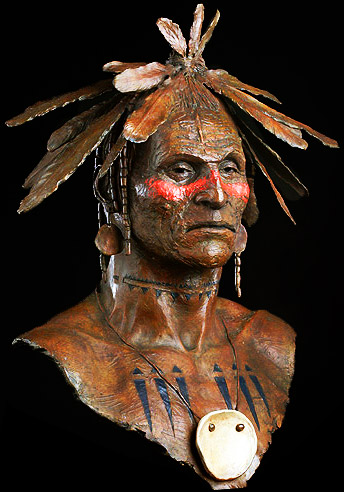
” . . . At some little distance behind these stood a chief, remarkably tall and well made, but of so stern as aspect, that the most undaunted person could not behold him without feeling some degree of terror. He seemed to have passed the meridian of life, and by the mode in which he was painted and tatooed I discovered that he was of high rank. However, I approached him … but to my great surprise he withheld his hand and looking down at me fiercely, said in the Chippewa tongue, ‘Cawain nishishin saganosh’, that is, ‘The English are no good.’ As he had a tomahawk in his hand, I expected this laconic sentence would be followed by a blow … “
from Jonathan Carver,
“Travels Through the Interior Parts of N. America”
(1767)
Minavivand, “Le Grand Sauteur” (The great Ojibway to the French) was a steadfast ally of France and an inveterate enemy of the English. Great Britain’s recent conquest of Canada and their subsequent unjust and arrogant treatment of the Indians, left the tribes of the Old Northwest and Great Lakes receptive to the councils of Guyasuta and Pontiac who called for the destruction of the British in the belief that a victorious campaign by the 17 united tribes to drive the English into the sea would awaken the French King from his long sleep and encourage his return. As a consequence, a plan was created to simultaneously attack all 14 English forts and outposts throughout that vast region. Within a short time, 11 of the 14 fell and the remaining three, Forts Pitt, Niagara and Detroit were cut off and under seige for over a year.
Minavivana devised the diabolically unique strategy to take Fort Michilimackinac (Michigan). The Ojibwaas, he announced to the fort’s commandant, will play the Sauk tribe in a grand game of lacrosse in honor of the upcoming birthday of the English King – the day chosen for the attacks. So contageous was the growing anticipation and heavy wagering as the opening face-off neared that, as planned, even the unsuspecting British garrison of nearly 100 men was drawn in. For many, this would be their first opportunity to witness the Indian game of ball that most had only heard about. Played with 40 men on aside and goals (single posts) roughly 3/4 mile apart, the game was a wonderful display of superb athleticism and brutal physical contact. With the score deadlocked at 3-3, the next goal would decide the match.
However, no more goals were to be scored. Two things happened next: first came “the water shot”, the ball being purposely thrown into the lake. This was designed by Minavivana to reassure the English garrison that wherever the ball goes, it’s in play. Then came the climactic moment. The tall Ojibway captain, on the point of releasing the ball, intentionally smashed his stick against the stick a teammate held rigidly vertical. The resulting impact caused the ball to rocket down the field, hitting the distant, open stockade gate and ricocheting into the stockade grounds. The soldiers assumed this to be an accidental shot. It was no accident. A simulation of the game had been recreated in the Indian village and the two players had been practicing the shot. Nothing in this game had been left to chance! The players rushed toward the gate to retrieve the ball. The soldiers, having been recently reminded that wherever the ball goes, it’s in play, suspected nothing and were not alarmed in the least. The Indian women, seemingly just spectators were strategically positioned near the gate wrapped in blankets. Under the blankets were all the weapons. Lacrosse sticks were quickly exchanged for hatchets and war clubs. The helpless garrison fell nearly to a man. Minavivana had given the British King a memorable birthday present – the most famous lacrosse game in history!

